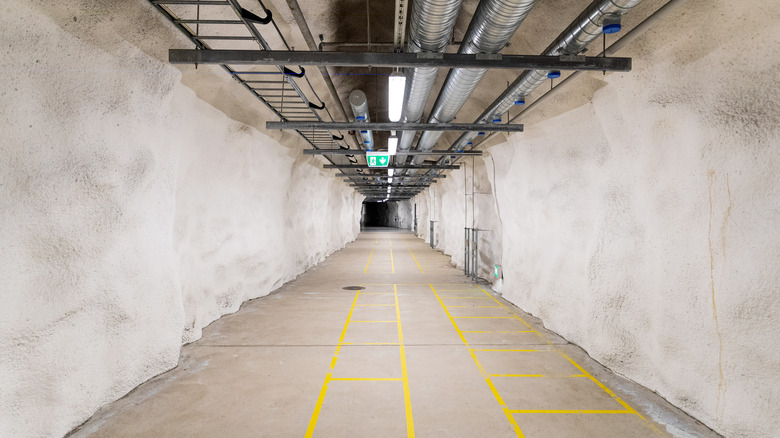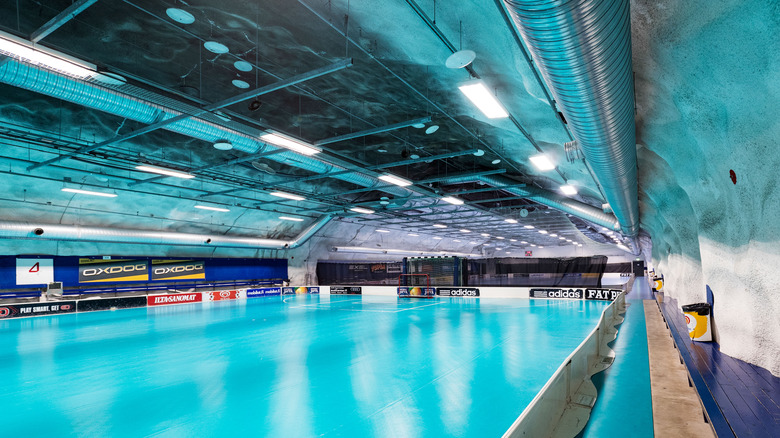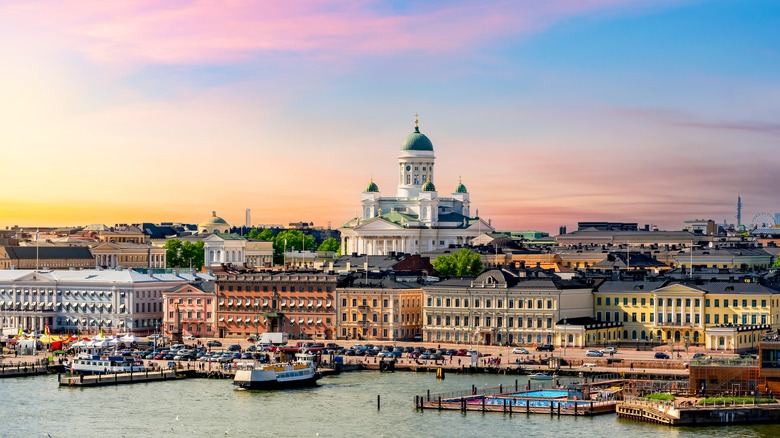Why Finland Built A Massive Network Of Nuclear Bunkers
Finland's capital Helsinki, population 658,000, is a bustling metropolis that perfectly fits the part of a modern European city. However, 18 meters (59 feet) below the city is something you might not expect — a vast network of caverns and tunnels blasted from the bedrock that can accommodate every last one of Helsinki's residents, plus nearly a quarter-million more.
Unassuming entrances to this underground world dot the city like subway stations, but the casual façade belies something darker. The primary purpose of this city-beneath-the-city is to function as large-scale bomb shelters and perhaps even nuclear bunkers. They're called civil defense shelters, and there are about 5,500 of them in Helsinki alone, though they can be found throughout this Nordic country.
These bunkers can provide shelter from conventional bombs, nuclear weapons, radiation, biological and chemical weapons, and the aftermath of these attacks. There are stores of water, food, and medicine that could last for weeks and access points to the surface for resupply. They have independent air and water filtration systems and power supplies, decontamination facilities, and dual blast doors to help maintain a sealed environment.
Thankfully, a worst-case scenario hasn't necessitated these shelters yet, but that doesn't mean they don't get used. Here is why Finland built an enormous network of bomb shelters and how they serve the city today.
More than just bunkers in wait
Of course, the construction and maintenance of these bunkers come with a significant financial cost. While the bunkers do undergo regular preparedness drills — which involve things like setting up bunks and toilets from storage — these large spaces often see regular use for more pleasant activities too.
Because many of these bunkers contain large open spaces, they can be set up as sporting arenas. These arenas can then be rented out to youth and amateur leagues to help offset the maintenance cost of the facilities. Some bunkers even contain Olympic-size swimming pools. Other businesses can also take residence in these shelters to support these ancillary functions, such as food and beverage stalls. There are even children's playgrounds in some of the bunkers.
All of this activity means that the bunkers also contain large underground parking lots. In the event of an emergency, the parked cars could provide small private spaces for individuals and families, while the sporting areas can be cleared and the pools drained and converted into disaster shelters within 72 hours.
These bunkers are not sitting idly and filling with cobwebs. They're useful public spaces, and regular use means they stay both clean and familiar. Of course, they're also a constant reminder of impending doom. So what led to the creation of these bunkers in the first place?
Why were they built?
At present, war has brought destruction upon the European continent, and this is hardly the first time — a reality that the Finnish people know too well. In the early days of World War II, the Soviet Union invaded Finland in a campaign now known as the Winter War. Soviet losses far exceeded Finland's, but in the end the Soviet Union simply had too many soldiers for Finland to effectively defend against, and a peace treaty was signed that ceded 12% of Finland's land area to the Soviet Union, most of which Russia still controls today.
The people of Finland retained the scars of this war. Today, Finland shares the longest land border with Russia of any European Union nation, spanning more than 1,300km (800 miles). While they've generally maintained a stance of neutrality since WWII, they've also fostered a sense of preparedness.
As such, these Finnish nuclear bunkers were first constructed during the 1960s during the tense and still-escalating days of the Cold War, in which its near neighbor was a primary player. Construction continues today, with Finnish law requiring that buildings over a certain size must contain a shelter. The Russian invasion of Ukraine, along with Finland's recent decision to join NATO, makes such preparations seem especially prescient, even as citizens hold out hope that these bunkers will never truly be needed.


